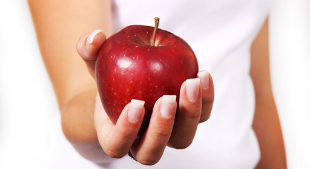As snacking is more popular than ever in the United States, it is important to be mindful of all the sneaky ways sugars find their way into your food. Healthy snack options are a great way to keep yourself full and nourished without all the hidden sugars.

The 2015-2020 dietary guidelines for Americans suggests limiting total calorie intake from added sugar to less than 10% per day. For a person that consumes a 2,000 calorie diet, this is 200 calories or about 4 tablespoons per day. This may seem like a small amount, but in reality, the consumption of added sugars has become a major health concern. Added sugar is a major health concern because 4 tablespoons of sugar can easily become 16 and even 32 tablespoons of sugar on a daily basis if we are not mindful. Excess consumption of added sugar can result in unwanted weight gain that can lead to becoming overweight or obese. According to the Mayo Clinic (2015), obesity is directly linked to numerous health problems including diabetes, high blood pressure, heart disease, and even cancer. If we fail to educate ourselves and make mindful healthy snack choices, it is simple to grab a candy bar as a snack without even thinking. Consequently, we skip over nutrient-dense, low-calorie snack options such as That’s it. Fruit Bars. Excess consumption of added sugars may eventually lead to obesity.
Added sugars may be found in a variety of foods. These foods include, but are not limited to, candy bars, yogurt, cookies, and that’s only naming a few of the most popular snack items on the market. For this reason, it is important to look at the ingredient list on the nutrition label to find where the hidden sugars are located. The ingredients on a food label are generally listed by weight in descending order. This means the ingredients that are used the most will appear first. Now, the ingredient list will not simply say “added sugar” or “hidden sugar” on the label. Learning to identify foods with added sugar is essential. Hidden sugars on the ingredient label appear as syrups (ex: high fructose corn syrup), end in the word “ose” (ex: sucrose), and may end with the word “sugar” on the ingredient list (ex: beet sugar). Additional words to look for include corn syrup, molasses, fructose, and fruit juice concentrate for instance. On the other hand, That’s it. Fruit Bars use the naturally occurring sugars found in fruits to make their products. Their Fruit Bars contain only two ingredients derived from nature’s dessert: fruit.
It is a common occurrence for someone who is accustomed to eating a lot of processed and/or hidden sugars to be surprised when they switch to real fruit. It is like the taste buds are in for a shock. Naturally occurring sugars may taste boring, unpalatable, and even bland. Fortunately, the way we enjoy food is more than just taste. Flavor and experience also play a major part in our food experience. We can change our psychological and sensory relationship with food and eventually enjoy the foods we had previously not. For instance, not only does That’s it. Fruit Bars not use added sugar in their products, but it is also derived from nutrient-dense fruits found in everyday grocery stores.
Fruits are an excellent source of various nutrients. They contain an assortment of vitamins, minerals, and phytochemicals which are needed by the body for growth, repair, and maintenance. For instance, That’s it. Apple + Mango Bar contains Vitamin C and folate which are respectively needed for tissue repair and growth. Making informed food decisions without sacrificing taste is fundamental. Non-stop days call for quick, easy snacks. Snacking during hectic days doesn’t have to lack nutrients and taste. As a best practice, skip over calorie-dense snacks such as cakes, cookies, pies, and candy bars that provide no nutritional benefit. Instead, snack smart by adding That’s it. Fruit Bars to your meal plan.
Written by Kim Rose, RD, LD, CDE
Links
www.YouTube.com/KimRoseDietitian
Related Blogs
Are All Sugars Bad?: Differences in Natural & Added Sugars
Healthy Eating and the Importance of Eating Fruits
References
- “Obesity.” Mayo Clinic, Mayo Foundation for Medical Education and Research, 22 Aug. 2019, https://www.mayoclinic.org/diseases-conditions/ob...
- “Chapter 1 Key Elements of Healthy Eating Patterns.” A Closer Look Inside Healthy Eating Patterns - 2015-2020 Dietary Guidelines, https://health.gov/dietaryguidelines/2015/guidelines/chapter-1/a-closer-look-inside-healthy-eating-patterns/#added-sugars.

